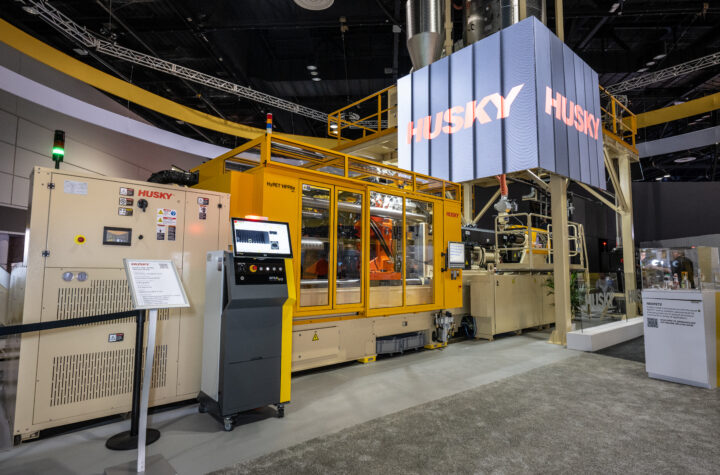Phase 1: The past
Who invented the very first EV is uncertain and several inventors have been given credit. In the early 1800’s, Hungarian, Ányos Jedlik invented a small-scale model car powered by an electric motor that he designed. In mid-1800’s, Robert Anderson of Scotland invented a crude electric-powered carriage. In 1835, another small-scale electric car was designed by Professor Stratingh of Groningen, Holland, and built by his assistant Christopher Becker. In 1835, Thomas Davenport, a blacksmith from Brandon, Vermont built a small-scale electric car. Davenport was also the inventor of the first of the first American-built DC electric motor.
Increased Popularity
By the turn of the century, America was prosperous and cars, now available in steam, electric, or gasoline versions, were becoming more popular. The years 1899 and 1900 were the high point of electric cars in America, as they outsold all other types of cars. One example was the 1902 Phaeton built by the Woods Motor Vehicle Company of Chicago, which had a range of 18 miles, a top speed of 14 mph and cost $2,000. Later in 1916, Woods invented a hybrid car that had both an internal combustion engine and an electric motor.
Electric vehicles had many advantages over their competitors in the early 1900s. They did not have the vibration, smell, and noise associated with gasoline cars. Changing gears on gasoline cars was the most difficult part of driving, while electric vehicles did not require gear changes. The only good roads of the period were in town, causing most travel to be local commuting, a perfect situation for electric vehicles, since their range was limited. The electric vehicle was the preferred choice of many because it did not require the manual effort to start, as with the hand crank on gasoline vehicles, and there was no wrestling with a gear shifter.
While basic electric cars cost under $1,000, most early electric vehicles were ornate, massive carriages designed for the upper class. They had fancy interiors, with expensive materials, and averaged $3,000 by 1910. Electric vehicles enjoyed success into the 1920s with production peaking in 1912.
Decline of the Electric Vehicle
For the following reasons the electric car declined in popularity. It was several decades before there was a renewed interest.
• By the 1920s, America had a better system of roads that now connected cities, bringing with it the need for longer-range vehicles.
• The discovery of Texas crude oil reduced the price of gasoline so that it was affordable to the average consumer.
• The invention of the electric starter by Charles Kettering in early 1900’s eliminated the need for the hand crank.
• The initiation of mass production of internal combustion engine vehicles by Henry Ford made these vehicles widely available and affordable in the $500 to $1,000 price range. By contrast, the price of the less efficiently produced electric vehicles continued to rise. In 1912, an electric roadster sold for $1,750, while a gasoline car sold for $650.
Electric vehicles had all but disappeared by 1935. The years following until the 1960s were dead years for electric vehicle development and for their use as personal transportation.
The Return
The 1960s and 70s saw a need for alternative fueled vehicles to reduce the problems of exhaust emissions from internal combustion engines and to reduce the dependency on imported foreign crude oil. Many attempts to produce practical electric vehicles occurred during the years from 1960 and beyond.
Battronic Truck Company
In the early 60s, the Boyertown Auto Body Works jointly formed the Battronic Truck Company with Smith Delivery Vehicles, Ltd., of England and the Exide Division of the Electric Battery Company. The first Battronic electric truck was delivered to the Potomac Edison Company in 1964. This truck was capable of speeds of 25 mph, a range of 62 miles and a payload of 2,500 pounds.
Battronic worked with General Electric from 1973 to 1983 to produce 175 utility vans for use in the utility industry and to demonstrate the capabilities of battery-powered vehicles. Battronic also developed and produced about 20 passenger buses in the mid-1970s.
CitiCars & Elcar
Two companies were leaders in electric car production during this time. Sebring-Vanguard produced over 2,000 “CitiCars.” These cars had a top speed of 44 mph, a normal cruise speed of 38 mph and a range of 50 to 60 miles. The other company was Elcar Corporation, which produced the “Elcar”.
The Elcar had a top speed of 45 mph, a range of 60 miles and cost between $4,000 and $4,500.
United States Postal Service
In 1975, the United States Postal Service purchased 350 electric delivery jeeps from the American Motor Company to be used in a test program. These jeeps had a top speed of 50 mph and a range of 40 miles at a speed of 40 mph. Heating and defrosting were accomplished with a gas heater and the recharge time was 10 hours.
They were popular for a while back then but ended up too expensive and not fast enough to keep up with the fuel-burning car.
The biggest blow to them was probably the mass production of Henry Fords’ petrol powered cars which cost about half of what the electric cars did.
The electric car put up a good fight though because at one point they even outsold internal combustion engine cars and amazingly held the land speed record until 1899!
Also if you think the Toyota Prius was the first hybrid car, think again as the first hybrid was made in 1900.
After that, however, it was all downhill for quite a while. The Electric Car really vanished on the roads from the 1930’s until resurfacing again in the 1960/70’s when the need to an alternative to petrol-powered cars started to become obvious again.
Zero emissions, quiet economy, minimal maintenance … electric vehicles (EVs) is quite appealing. While one of the biggest current limitations of EVs is limited driving range (and recharge time), these issues are being worked on as we speak. And until there are more all-electric production vehicles available, this growing list of gasoline to EV conversion companies will continue to expand.
Want to learn more about current and future developments in Electric Vehicles?
Visit our Download Center for more articles, whitepapers and interviews:
http://bit.ly/ev-articles














































 The future of thermoplastics in the automotive industry and process technologies towards mass produc
The future of thermoplastics in the automotive industry and process technologies towards mass produc



